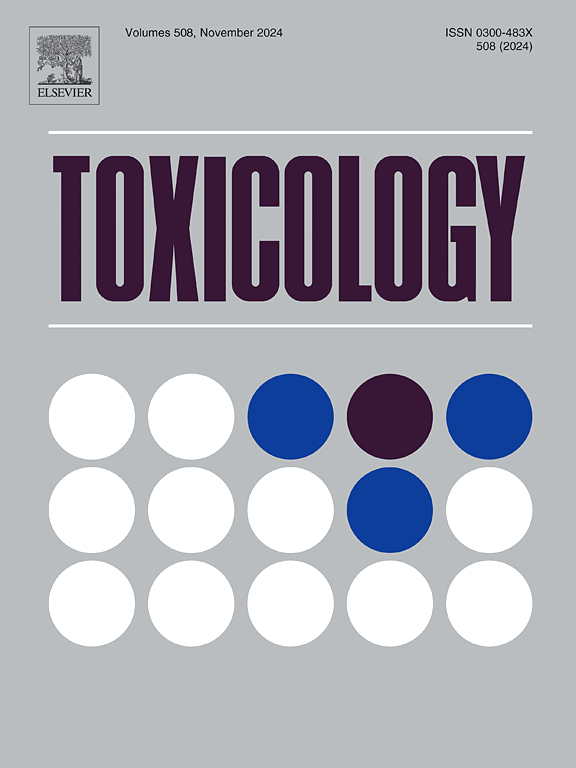在DevTox胚层报告平台上筛选工业化学品对人类发育的毒性。
IF 4.6
3区 医学
Q1 PHARMACOLOGY & PHARMACY
引用次数: 0
摘要
美国环保署新化学品合作研究计划(NCCRP)旨在利用代表最佳可用科学的新方法(NAMs),最大限度地提高《有毒物质控制法》(TSCA)规定的新化学品审查过程的效率和稳健性。在提交新化学品时,考虑到可能对孕妇及其正在发育的后代造成的健康危害,由于可接受的筛选方式数量不足,无法迅速确定对人类的潜在危害。DevTox胚层报告(GLR)检测平台可评估化学物质对早期胚层发育的影响,并已被证明是快速化学筛选的可行选择。本研究的目的是在DevTox GLR-Endo实验中筛选从TSCA非保密活性清单中选出的171种具有结构多样性的代表性化学物质,以及54种体外实验参考化学物质,以确定其潜在的发育毒性。分析性能指标,以及对一组16个参考发育毒物的预测,与先前的报告一致,并在可接受的参数范围内。在先前未在该分析中评估的38种参比化学物质中,25种被确定为活性,其中13种显示出SOX17分析终点的选择性。对于测试化学集,分析的165种化学物质中有60种是活性的,其中29种表现出一定程度的选择性活性。研究结果涵盖了一系列化学品的关键毒理学领域,这些化学品与NCCRP基于nams方法的开发有关,并可能为基于nams的危害评估策略的工具开发提供信息。本文章由计算机程序翻译,如有差异,请以英文原文为准。
Screening industrial chemicals for human developmental toxicity in the DevTox Germ Layer Reporter platform
The EPA New Chemicals Collaborative Research Program (NCCRP) seeks to maximize the efficiency and robustness of the new chemical review process under the Toxic Substances Control Act (TSCA) using new approach methods (NAMs) that represent the best available science. Consideration of the possible health hazards to pregnant women, and their developing offspring, for new chemical submissions is challenged by an insufficient number of acceptable screening modalities to quickly identify potential hazards to humans. The DevTox Germ Layer Reporter (GLR) assay platform evaluates chemical effects on early germ layer development and has been demonstrated to be a viable option for rapid chemical screening. The objective of this study was to screen a structurally diverse set of 171 representative chemicals selected from the TSCA non-confidential active inventory, and 54 in vitro assay reference chemicals, for potential developmental toxicity in the DevTox GLR-Endo assay. Assay performance metrics, as well as predictivity across a set of 16 reference developmental toxicants, were consistent with prior reporting and within acceptable parameters. Of the 38 reference chemicals not previously evaluated in the assay, 25 were identified as active, with 13 demonstrating selectivity for the SOX17 assay endpoint. For the test chemical set, 60 of the 165 chemicals analyzed were active, with 29 exhibiting a degree of selective activity. The results provide coverage of a critical toxicological domain for a set of chemicals relevant to the development of NAM-based methods for the NCCRP and may inform the development of tools in a NAMs-based hazard assessment strategy.
求助全文
通过发布文献求助,成功后即可免费获取论文全文。
去求助
来源期刊

Toxicology
医学-毒理学
CiteScore
7.80
自引率
4.40%
发文量
222
审稿时长
23 days
期刊介绍:
Toxicology is an international, peer-reviewed journal that publishes only the highest quality original scientific research and critical reviews describing hypothesis-based investigations into mechanisms of toxicity associated with exposures to xenobiotic chemicals, particularly as it relates to human health. In this respect "mechanisms" is defined on both the macro (e.g. physiological, biological, kinetic, species, sex, etc.) and molecular (genomic, transcriptomic, metabolic, etc.) scale. Emphasis is placed on findings that identify novel hazards and that can be extrapolated to exposures and mechanisms that are relevant to estimating human risk. Toxicology also publishes brief communications, personal commentaries and opinion articles, as well as concise expert reviews on contemporary topics. All research and review articles published in Toxicology are subject to rigorous peer review. Authors are asked to contact the Editor-in-Chief prior to submitting review articles or commentaries for consideration for publication in Toxicology.
 求助内容:
求助内容: 应助结果提醒方式:
应助结果提醒方式:


